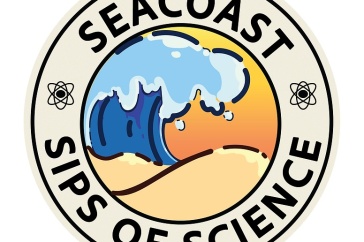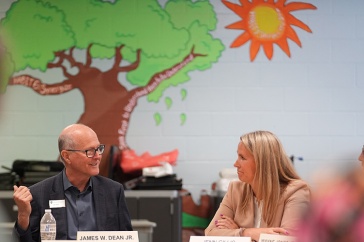
Eight members of John Hart’s landscape construction class spent hours this fall planting and pruning at two properties owned by the New Hampshire Fish and Game Department.
Visitors to newly conserved land on the Seacoast will have a chance to see monarch butterflies and spotted turtles, chickadees and tufted titmice, egrets and dragonflies.
What they won’t see is that students at the University’s Thompson School of Applied Science took a lead role in creating the habitat for these animals. The eight members of John Hart’s landscape construction class spent hours this fall planting and pruning at two properties owned by the New Hampshire Fish and Game Department. Their work will provide food and cover for native New Hampshire wildlife species.
“It couldn’t have been done without them,” says Rachel Stevens, stewardship coordinator at Great Bay Natural Estuarine Research Reserve, which has partnered with Fish and Game on the projects. “There’s no question about that.”
|
|
Though Hart’s class often does landscaping around campus, working with Fish and Game was a first for most of his students. Emma Erler, a senior environmental horticulture major who’s minoring in wildlife ecology, appreciated the opportunity to build landscapes for wildlife rather than for people. “It was nice to be able to get off campus and work for a different organization, and it was neat that what we were doing had an ecological impact.”
The students helped protect a key nesting area for turtles on a 20-acre site in Durham. Located off Dame Road, this parcel is part of the largest continuous block of forested land on the Seacoast. Several miles away, next to Chapman’s Landing on the Squamscott River in Stratham, the students launched the transformation of a 1.6-acre abandoned home site into a demonstration area for environmentally friendly backyard gardening. Hart’s spring 2012 class of landscape design students had each produced designs for this site, and these were incorporated into a master plan created by Robbi Woodburn of Woodburn & Co. Landscape Architecture in Newmarket, N.H.
The partnership with Fish and Game allowed the students to apply their classroom learning to a real-world situation while also showing them the importance of community involvement, says Hart, a professor of horticultural technology. “They realize that they have a valuable skill and a lot of knowledge, and that they can really be of help to the world around them. To me, landscape design and construction is environmental restoration.”
At both sites, the students cleared invasive species – such as Norway Maple, honeysuckle, buckthorn, winged euonymus and black swallow-wort – that threatened to choke out native species, reducing habitat value and biodiversity. They also planted a variety of native species aimed at attracting and supporting wildlife, including white birch, river birch, mountain ash, witch hazel, hazelnut, blueberries, fruit trees, and viburnums. At the Stratham site, they discovered and pruned what Stevens described as a gorgeous apple tree that will become the center of a butterfly garden.
“The students actually taught me a little about how to plant,” Stevens says. “So it wasn’t just their physical labor that was important, but also their knowledge.”
Stephannie Desmarais, a senior horticultural technology major in Hart’s class, says she’s been able to use what she learned about native species when talking to customers at the garden center where she works. “It was nice to be able to see the plans carried through as opposed to just reading about them. It’s totally different when you actually go out and do it.”
For instance, the students had to contend with the elements, including pouring rain and mud at the Dame Road site. And they had to move piles of dirt using nothing but shovels and their own muscle.
Indeed, it was much appreciated when Fish and Game workers came in with heavier machinery to dig the holes for some of the large trees. Notes Desmarais, “God bless the creator of excavators and backhoes.”
Originally published by:
UNH Today
Written by Sonia Scherr ’13MFA. Photos courtesy Cory Riley, Manager, Great Bay Research Reserve




















































